Cards In This Set
| Front | Back |
 What is this image? |
Jacopo da Pontormo,
Deposition.
Ca. 1526-28
Santa Felicita, Florence
// Mannerist style painting, an altar piece, uses desaturated colours inspired by the colours of the Sistine Chapel ceiling, the figure under jesus seems to emulate that of the Sybil woman from the Sistine Chapel ceiling, |
 What is this image? |
Michelangelo,
Tomb of Giuliano de'Medici. 1519-34 New Sacristy, San Lorenzo, Florence //reimagining of Classical architecture, Mannerist style, design shows some kinship with such Early Renaissance tombs as the tomb for Leonardo Bruni, no outright Christian imagery, no inscription, and the effigy has been replaced by allegorical figures of Day on the right and Night on the left, figures were meant to suggest that it was Day and Night that brought Giuliano to his death, Day seems to brood while Night appears to be restless, Giuliano is an ideal image of the prince and bears no resemblance to the deceased, tomb expresses the triumph of the Medici family overtime |
 What is this image? |
Benvenuto Cellini,
Saltcellar of Francis I. 1540-43 //Mannerist style, saltcellar made for the king Francis I, main function is as a conversation piece, salt comes from the sea and pepper comes from the earth and the boat shaped salt container is protected by Neptune, pepper is watched over by a personification of earth who might be Amphitrite, the figures around the base represent the four seasons and the four parts of the day |
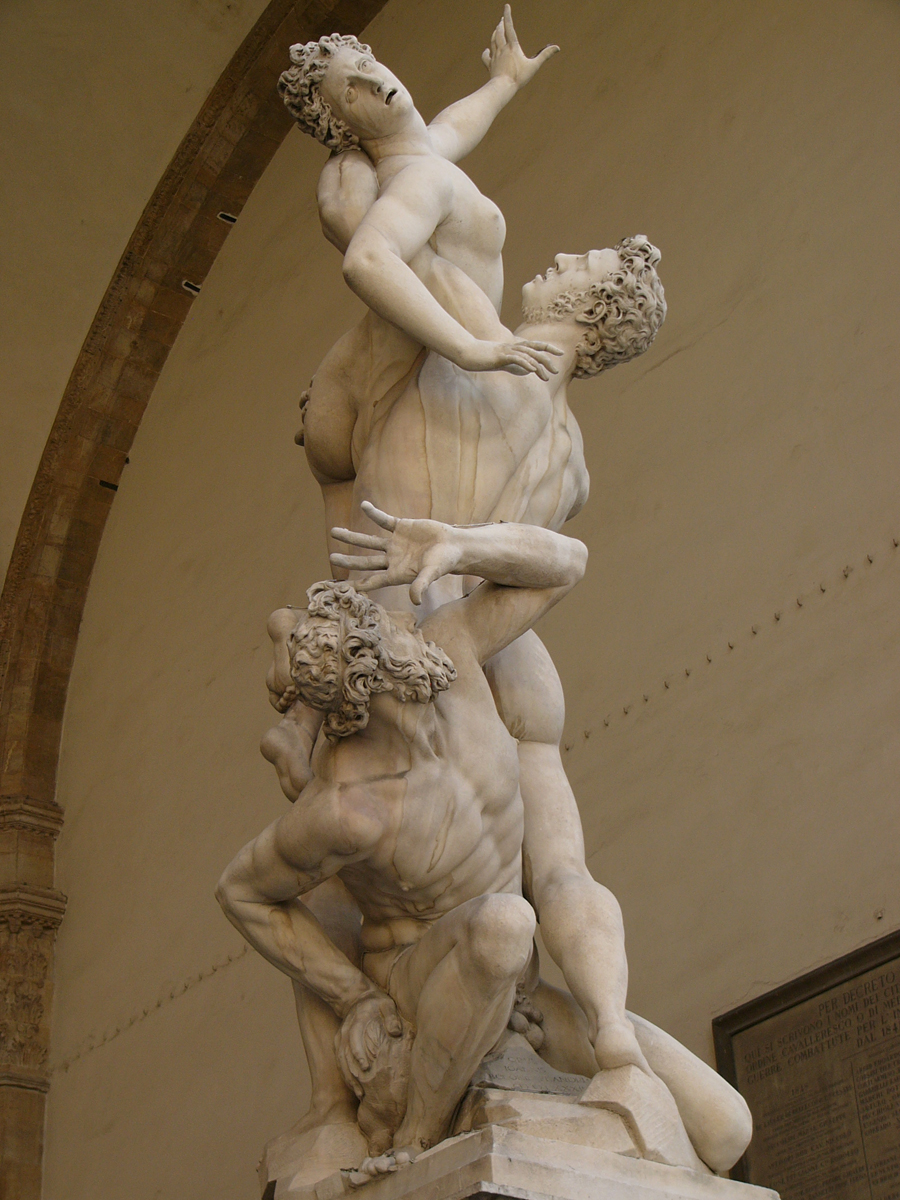 What is this image? |
Giovanni Bologna
The Rape of the Sabine Woman 1583 //Figura serpentinata meaning there is no fixed vantage point, the contrast between form and content is what the Mannerist style is all about, story of how Rome's founders who came from across the sea tricked the Sabines and took the women away by force |
 What is this image? |
Michelangelo
The Last Judgement 1534-41 Sistine Chapel, Vatican City //replaces physical tormnets with spiritual agony expressed through violent contortions of the human body within a turbulent atmosphere, angelic trumpeters signal the end of time, his use of nudity signals his belief in the sanctity of the human body but after he died assistants were commissioned to add bits of clothing to mask the naked figures, the apostle Bartholomew is below Christ holding a human skin to represent his martyrdom by flaying, the skin is Michelangelo's and represents himself as being unworthy of being resurrected in the flesh |
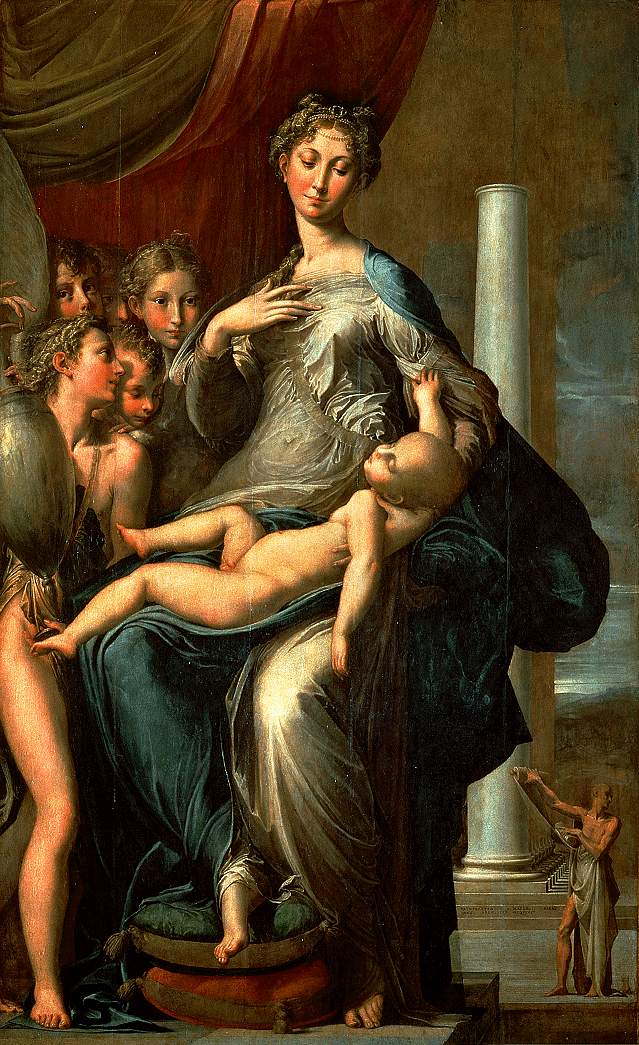 What is this image? |
Parmigianino
The Madonna With the Long Neck 1535 //commissioned for a family chapel, Christ Child balances on her lap which shows the unbalance of the postures and compostition, typical of Mannerist fashion that this occurs because it draws attention to the artist's skill and his inversion of Raphael's ideals, large baby Jesus in his mother's lap recalls the theme of the Pieta and implies that Jesus is already aware of his fate, gigantic column is a symbol often associated with the Madonna as the gateway to Heaveen and eternal life as well as the Immaculate Conception |
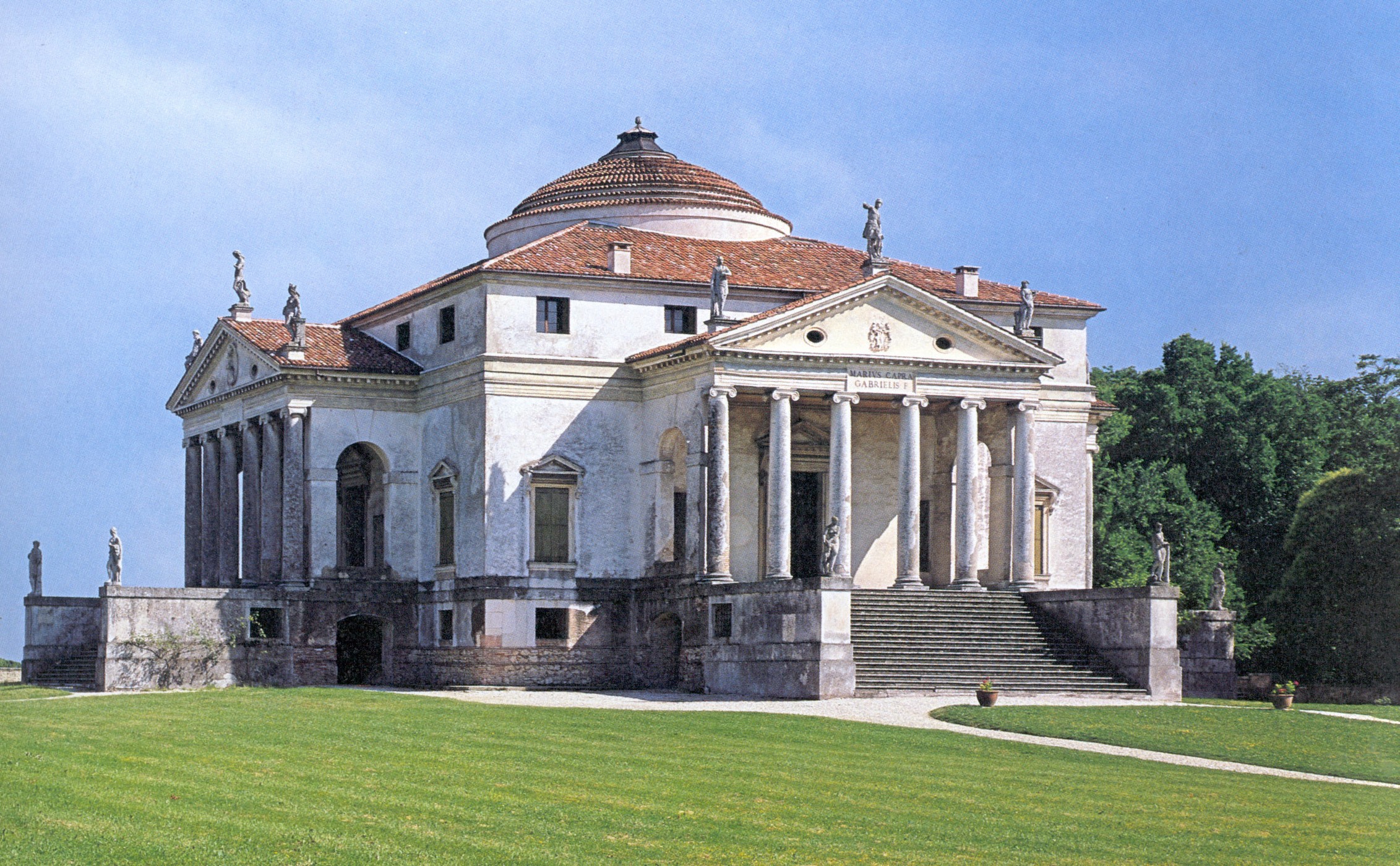 What is this image? |
Andrea Palladio
Villa Rotonda Vicenza 1567-70 //exemplifies the interpretation of the ancients, square block surmounted by a dome with identical porches in the shape of temple fronts on all four sides, a country house, meant to express his regard for antiquity and considered this feature essential for beauty, harmony, and utility |
 What is this image? |
Jacopo Tintoretto
The Last Supper 1594 //absorbed later styles of High Renaissance artists, assimilated the visionary effects of Titian's late paintings and the energetic compositions of late Michelangelo, barely hints at the human drama of Judas' betrayal as he can be seen isolated near the side of the table across from Jesus, table placed on an angle to give the picture an exaggerated perspective, gives the event an everyday setting with attendents etc., blurs the distinction between supernatural and natural with the oil lamp smoke that turns into angels, the main purpose is to show the miracle of the Eucharist of the Transubmation of turning the earthly into the divine, END OF MANNERIST |
 What is this image? |
Hieronymus Bosch
The Garden of Earthly Delights 1480-1515 //right panel represents hell, punishments for humankind if they don't follow morality nothing to do with the classical world or emulating greek sculpture imaginitive take on what visual art can do, BEGINNING OF HIGH RENAISSANCE? |
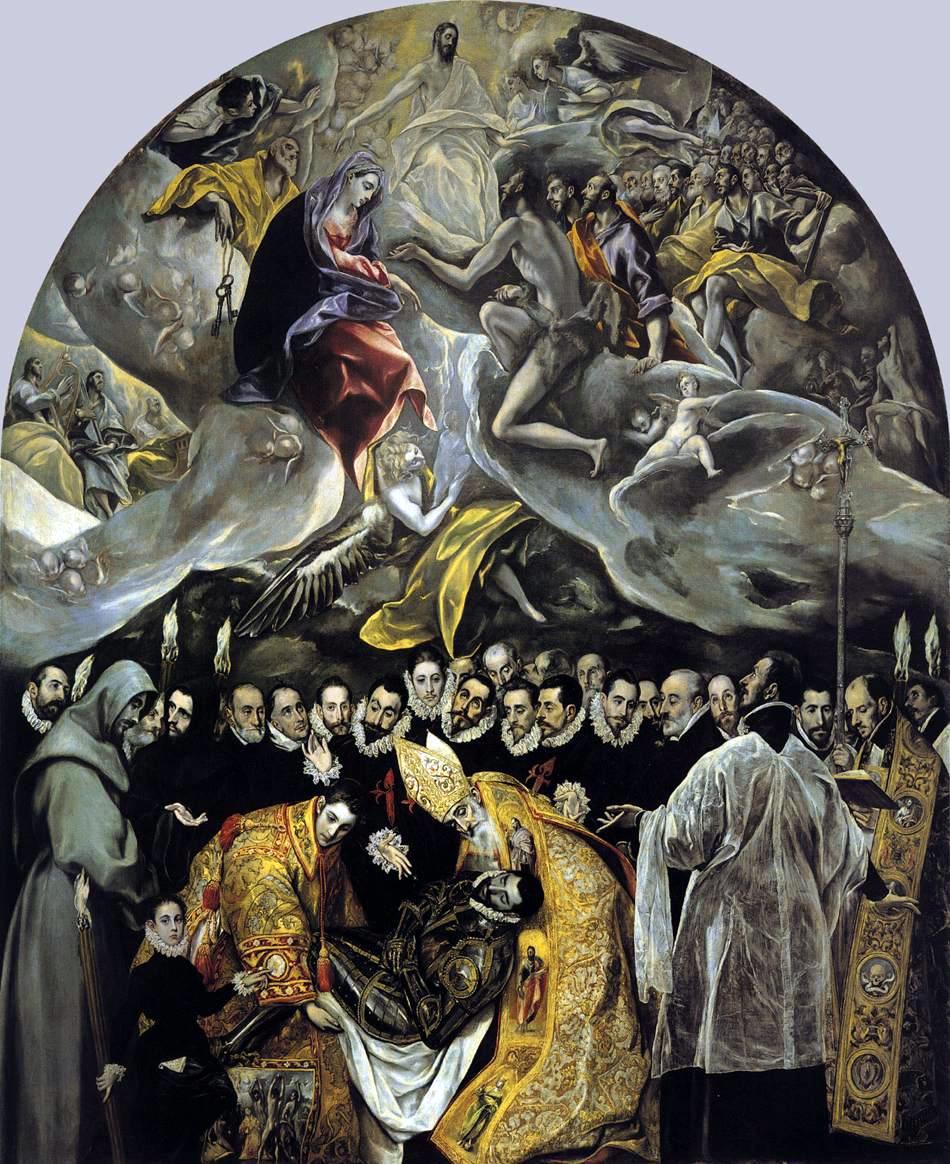 What is this image? |
El Greco
The Burial of Count Orgaz 1586 //emphasizes the Roman Catholic position that good works are meant to achieve salvation and that saints serve as intercessors with Heaven, the count's soul is carried to Heaven by an angel, the compressed space and unearthly light and weightless bodies share stylistic features with Italian Mannerist works, mirrors the intensity of deep spiritual struggle |
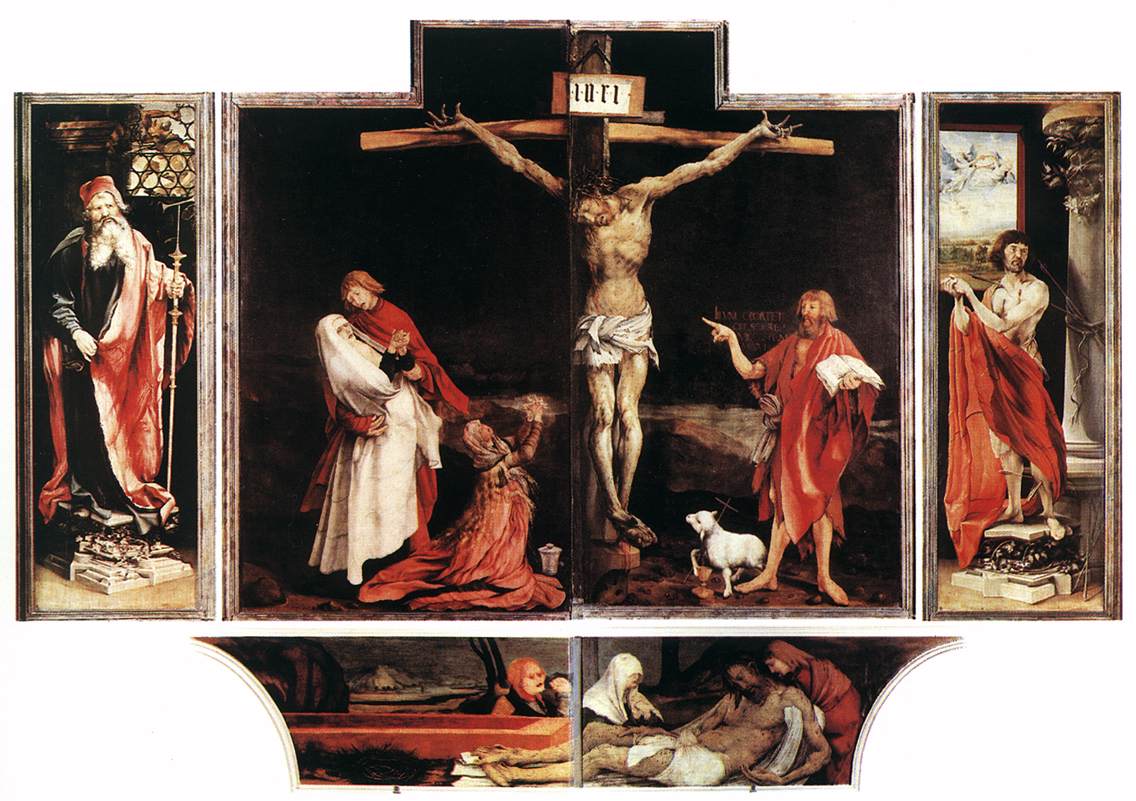 What is this image? |
Matthias Grunewald
Isenheim Altarpiece 1509-1515 St. Sebastian; The Crucifixion; St. Anthony Abbot //stood on the high altar of the monastary church where both the sick in the hospital and the monks who served them could see it, the wings show St. Sebastian who was invoked against the plague and St. Anthony Abbot who was revered as a healer, central image of the Crucifixtion draws on the late medieval tradition that emphasizes the suffering of Christ and the grief of his mother, renders Christ on a heroic scale so that it dominates the other figures and the landscape, the single crucifix beccomes a lonely event silhouetted against a ghostly landscpae and a black sky, Hospital for treatment of ergotism |
 What is this image? |
Albrecht Durer
The Four Horsemen of the Apocalypse 1498 //text from the book of Revelation, image depicts War Conquest Famine and Death overunning the Earth, partly owed style to Durer's experience with Italian art, his medium is the woodcut and has redefined it with the linear devices of engraving, transformed the techniques of woodcut all over Europe |
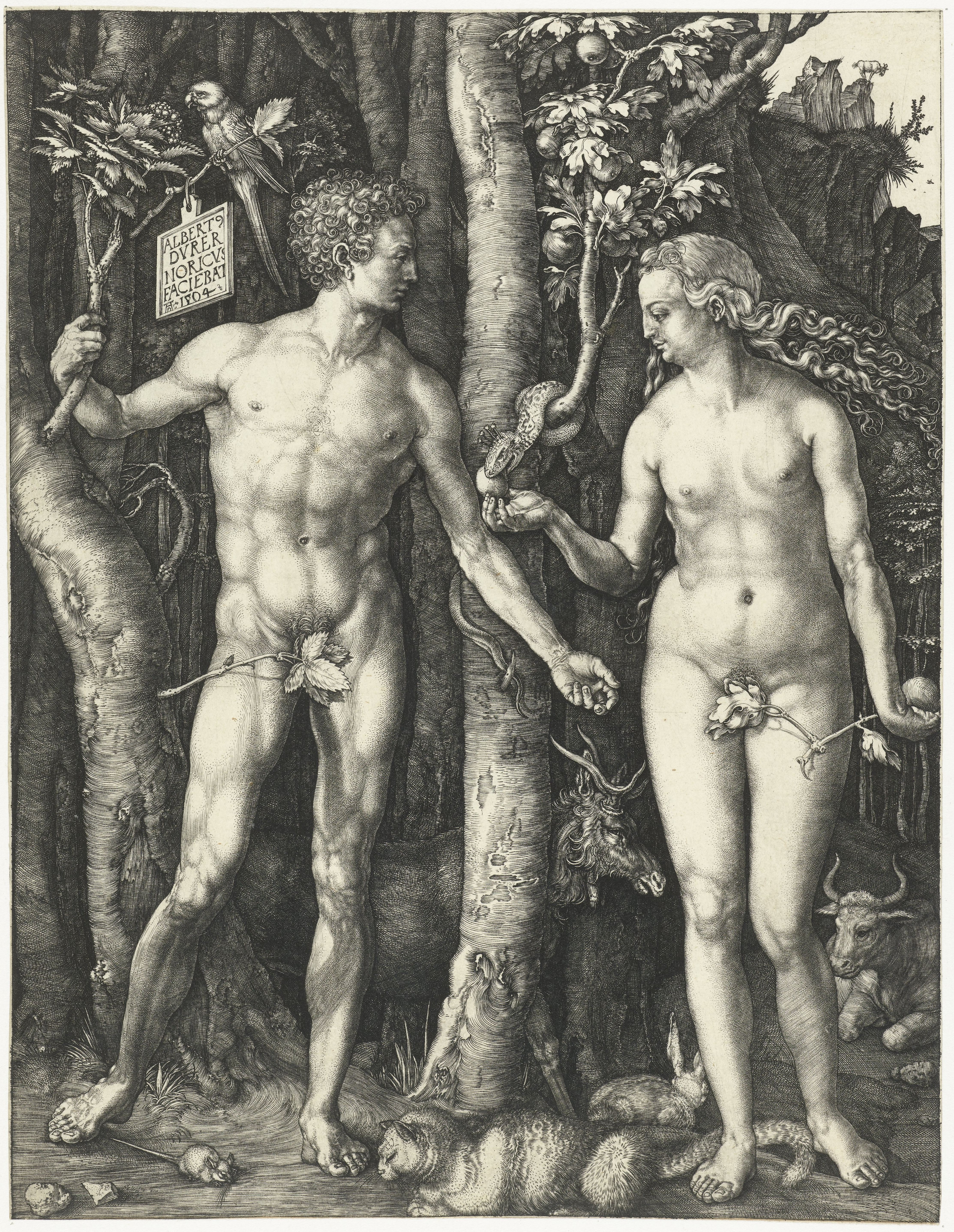 What is this image? |
Albrecht Durer
Adam and Eve 1504 //constructed according to what Durer believed to be the perfect proportions based on Vitruvius, used stippling and hatching to create darkness, great tonal and textural range due to this, this was before they were kicked out of the garden and so all the animals and tones of the engraving are balanced and coexisting, humans retain an ideal beauty animals can be attributed to the sins of Adam and Eve |
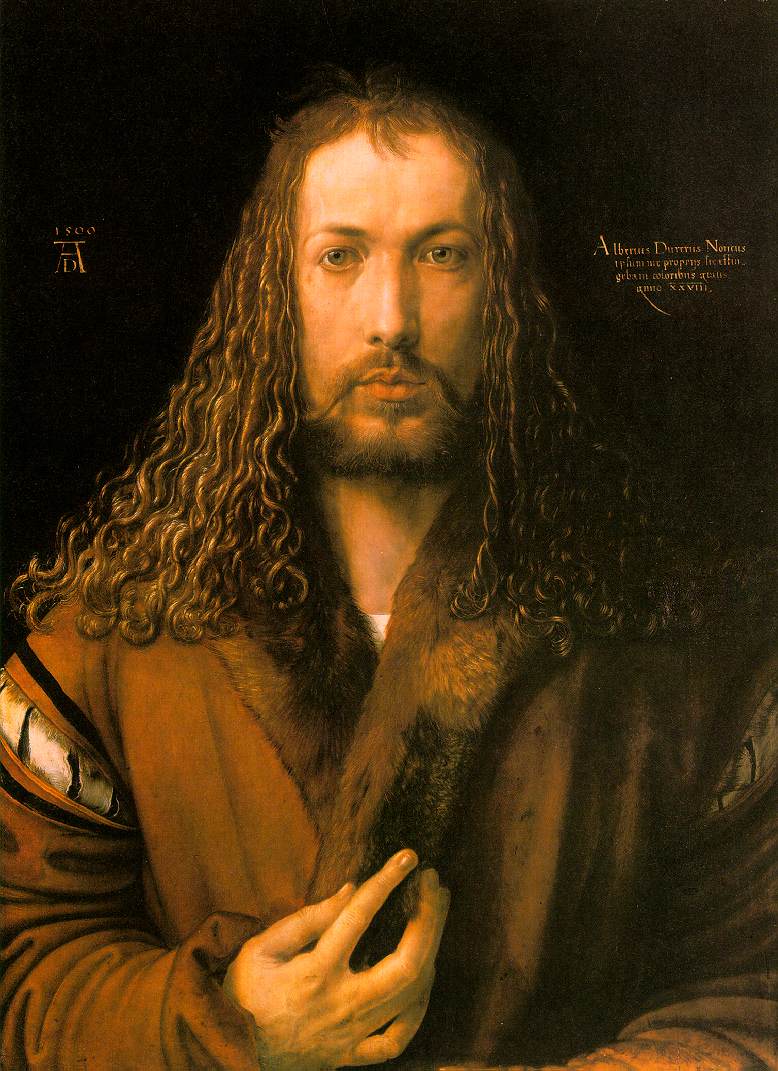 What is this image? |
Albrecht Durer
Self-Portrait 1500 //the solemn pose and the idealization of the features have an authority that was not found in most portraits up to this time, instead of conventional three-quarter pose Durer places himself frontally in the composition which is a pose usually reserved for images of the divine, |
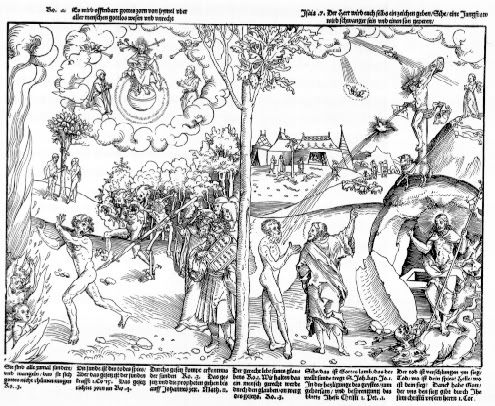 What is this image? |
Lucas Cranach the Elder
An Allegory of Law and Grace 1530 //cast Luther's doctrines into visual form, contrasts the difference between the fate of a Catholic and the fate of a Lutheran, left side depicts the Catholic doctrine that when the soul is unsuccessful at following the Law of Moses that it is consigned to Hell at the Last Judgement, right side depicts Luther's position that the believer is saved because faith in Christ alone assures salvation, compared to Durer it is simpler without complex tonalities or illusions of space or an emphasis on textures, makes the image as legible and accessible as the text |



